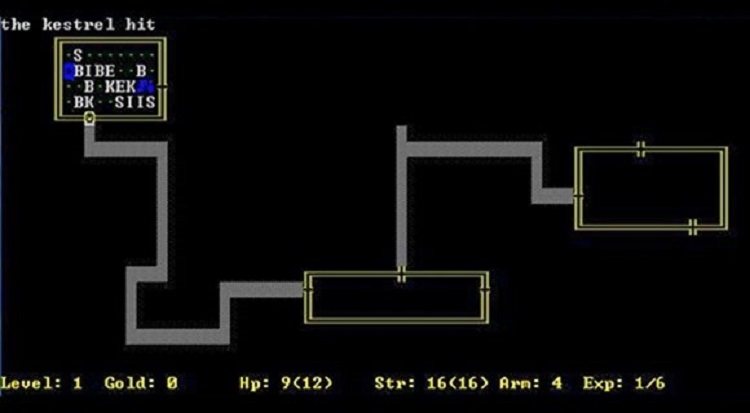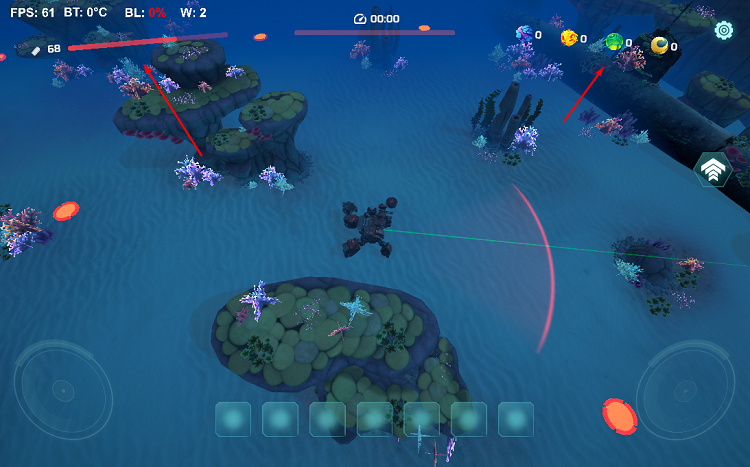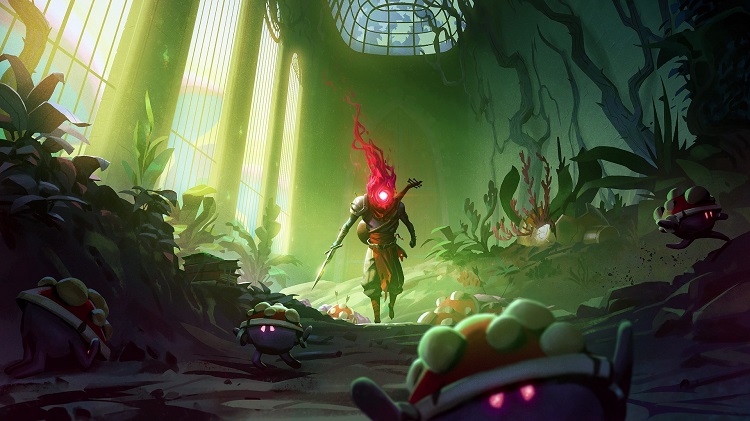As a game developer, I’ve always been fascinated by the roguelike and roguelite genres. They both offer unique, challenging gameplay, yet are often misunderstood and sometimes incorrectly used interchangeably.
For beginners or those unfamiliar with these terms, I’d like to delve into the differences and common features between roguelike vs lite.
And to help illustrate these concepts, we’ll discuss Ocean Keeper on Steam, a game that retroactively captures the essence of roguelike mechanics.
Table of Contents
Understanding Roguelikes
Roguelikes are defined by a set of strict criteria established by games like “Rogue” from 1980. The defining features include:
- Permadeath: One of the most crucial elements of roguelikes is permadeath. Once you die, it’s game over.
- Procedural Generation: Levels and worlds are procedurally generated, meaning no two playthroughs are identical.
- Turn-Based Combat: Typically, roguelikes feature turn-based combat, allowing players to strategize their next move carefully.
- Complexity and Depth: The games often have a steep learning curve, providing a rewarding challenge for players willing to invest the time.
- ASCII Graphics: Many traditional roguelikes feature simple graphics, often text-based, which further emphasizes gameplay over visuals.
Roguelites features
Roguelites evolved from roguelikes by relaxing some of these strict criteria:
- Persistent Progression: Unlike roguelikes, roguelites usually allow players to maintain some progress, like character upgrades or resources, after death.
- Simplified Mechanics: They often streamline mechanics, making the gameplay more accessible to a broader audience.
- Real-Time Action: Roguelites frequently opt for real-time action instead of turn-based combat, which creates a faster-paced experience.
- Enhanced Graphics: While roguelikes tend to prioritize gameplay over graphics, roguelites often feature modern graphics that appeal to more casual gamers.
- Focus on Replayability: Roguelites emphasize replayability, with procedural generation and persistent progression encouraging multiple playthroughs.
How A Roguelite Is Different From A Roguelike
The main difference lies in their approach to challenge and player progression. Roguelikes challenge players to overcome obstacles using strategic planning, and there’s a high punishment for failure with permadeath.
Roguelites, on the other hand, give players an ongoing sense of progression, making death less of a setback.
“Ocean Keeper” as an Example of a Roguelite
“Ocean Keeper,” developed by RetroStyle Games, is a roguelite that embodies several of the key characteristics of the genre:
- Procedural Generation: Each dive into the oceanic depths is procedurally generated, meaning that every playthrough offers a new layout and fresh challenges.
- Persistent Upgrades: Although death is common, players retain their resources and upgrades, encouraging continuous improvement with each attempt.
- Real-Time Action: The gameplay emphasizes real-time action, where players battle sea monsters in fast-paced encounters.
- Resource Gathering: Players collect resources and artifacts to upgrade their robotic spider, a key feature that enhances the sense of progression.
- Community Engagement: The game’s developers actively involve the player community in shaping the game, fostering a collaborative environment for feedback and improvement.
What Qualifies A Game As A Roguelike
For a game to be classified as a roguelike, it typically needs to incorporate specific features like procedural generation, permadeath, and strategic gameplay. However, the roguelite genre broadens this definition by relaxing some of these features, making the games more accessible and modern.
While both roguelike and roguelite games share common features, they differ significantly in how they handle progression and difficulty.
“Ocean Keeper” is an excellent example of a modern roguelite, providing the replayability and challenge of a roguelike while offering players a sense of progression that reduces frustration after failure.
As game developers, we find the blending of these genres an exciting space to explore, offering a wealth of creative potential for future projects.
TOP 3 Animations for Roguelike Games
Quite often different animations are used to develop roguelike games. In order to make them more spectacular, it is worth using special game animation services https://retrostylegames.com/outsourcing/animation/
1. Pixel Art Animations
Pixel art animations are a staple in roguelike games, offering a nostalgic charm while requiring fewer resources to create. The simplicity of pixel art allows for quick iterations and adaptations, essential for procedurally generated environments.
Pros:
- Nostalgic Appeal: Brings back memories of classic games.
- Resource Efficient: Easier and quicker to create compared to 3D models.
- Customization: Allows for extensive variety in characters, enemies, and environments.
Example: “Spelunky”: This roguelike game features pixel art animations that breathe life into its challenging procedural caves, adding personality to the characters and hazards.
2. 2D Hand-Drawn Animations
Hand-drawn animations provide a unique aesthetic that can add depth and personality to roguelike games. The fluidity of hand-drawn animations allows for expressive characters and environments that enhance the game’s overall appeal.
Pros:
- Artistic Expression: Allows animators to inject unique styles.
- Detail-Oriented: Offers intricate detail that enriches the visual narrative.
Example: “Dead Cells”. This action-packed roguelike game employs stunning hand-drawn animations that complement its fast-paced gameplay and roguelite mechanics.
3. 3D Voxel Animations
Voxel animations offer a modern take on pixel art, with a 3D rendering that gives roguelike games a more immersive feel. This animation style adds a new layer of complexity to game environments and characters while maintaining a retro charm.
Pros:
- Depth: Provides a 3D feel while maintaining a pixelated aesthetic.
- Flexibility: Can be used for both characters and environments, enhancing the game’s depth.
Example: “Children of Morta”. A roguelike game that combines voxel animation with rich pixel art to create a vibrant world that enhances its procedural storytelling.
Each animation style brings its own flavor to roguelike games. The choice largely depends on the aesthetic, mechanics, and narrative direction of the game.
FAQs
1.) What’s the difference between roguelike and roguelite games?
Roguelikes offer permadeath and procedural generation with strict progression rules, while roguelites incorporate some of these features but with added accessibility and persistent progression.
2.) Can roguelike games have real-time combat?
Traditional roguelikes focus on turn-based combat, but modern interpretations sometimes blend in real-time action elements.
3.) Why are roguelite games popular?
Roguelites provide a mix of challenge and accessibility, with procedural generation and persistent progression making them engaging for many players.
4.) Is “Ocean Keeper” a roguelike or a roguelite?
“Ocean Keeper” is a roguelite, offering procedural generation and real-time combat while maintaining player progression across playthroughs.
5.) What qualifies a game as a roguelike?
A game qualifies as a roguelike if it has procedural generation, permadeath, strategic gameplay, and other elements inspired by the original “Rogue.”
6.) Do roguelite games have replayability?
Yes, roguelites emphasize replayability through procedural generation and persistent progression, encouraging multiple playthroughs.















